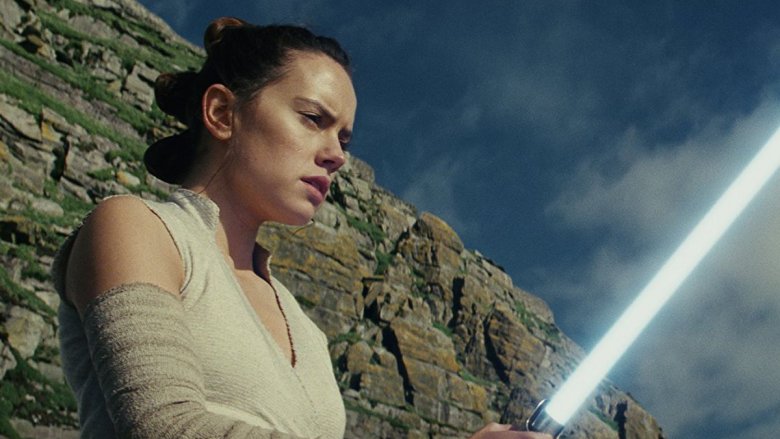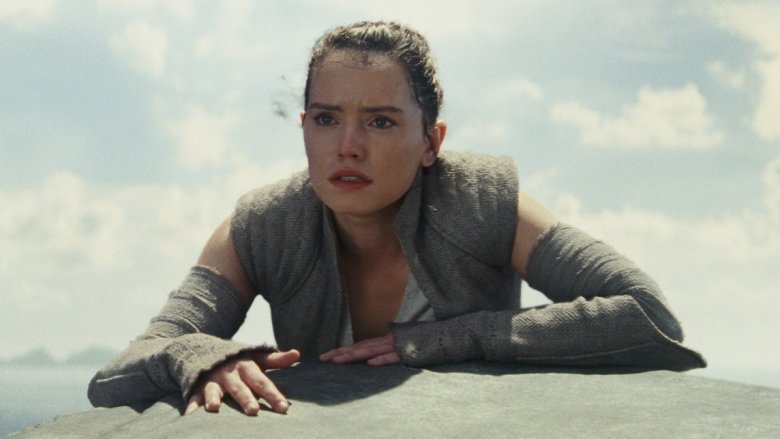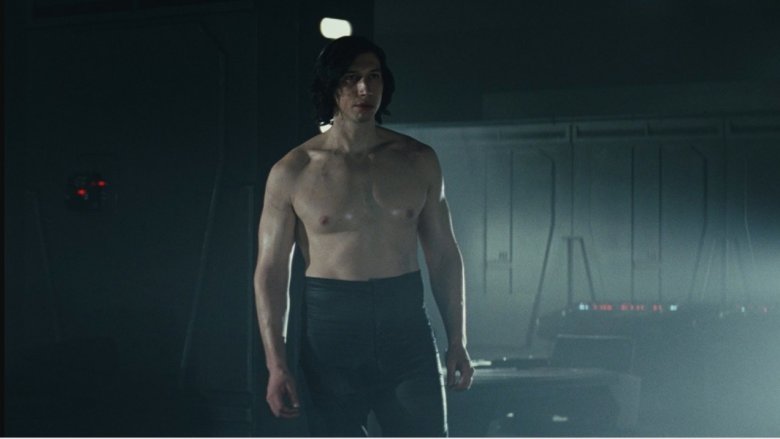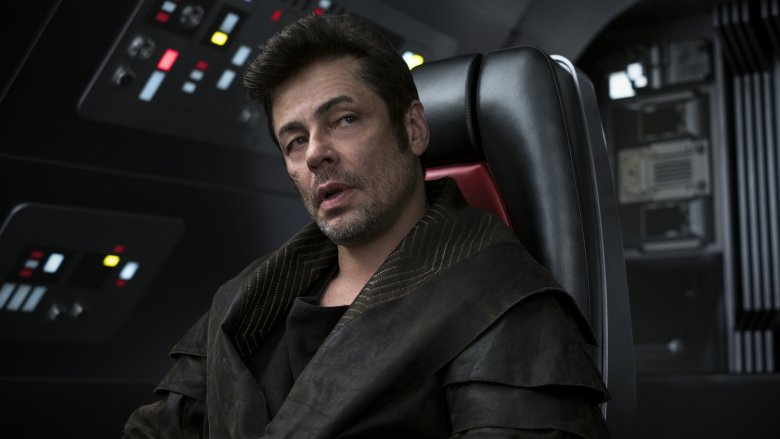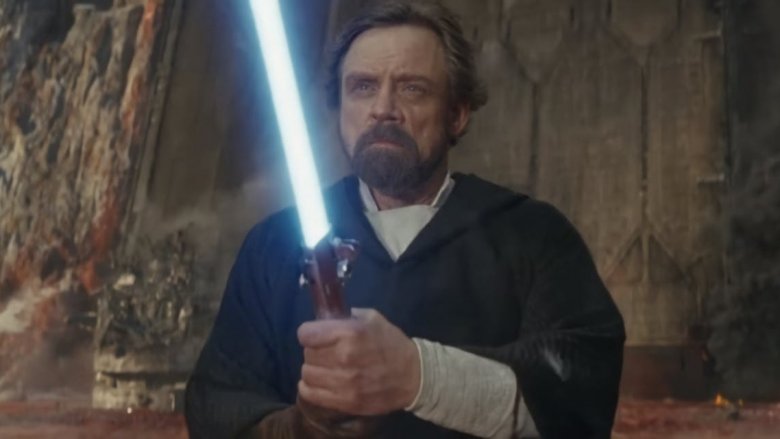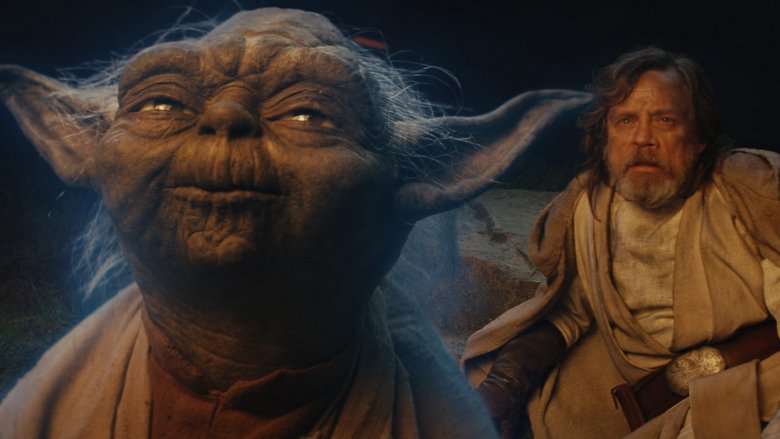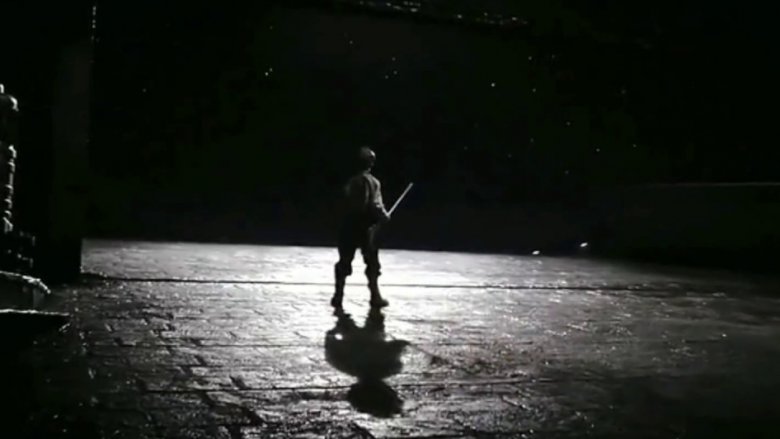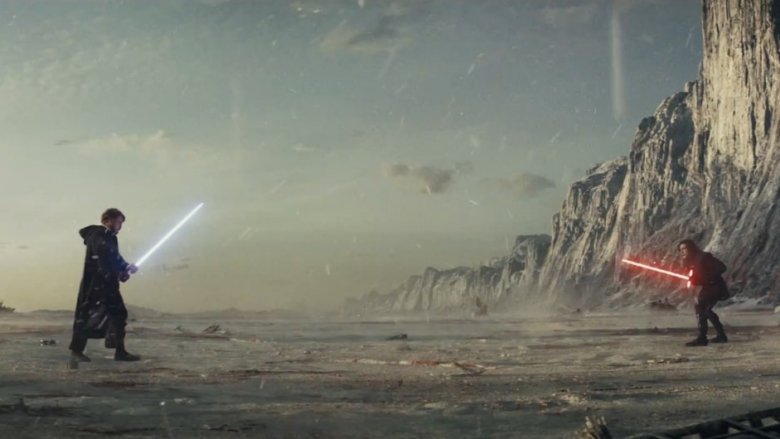How The Last Jedi Changed Star Wars And No One Noticed
Even for a film saga that introduces some new alien race or Force power in seemingly every installment, Star Wars: The Last Jedi changed the franchise forever. Director Rian Johnson's film moved the story away from prophesied heroes and a simplistic good and evil framework, making it clear that this is a galaxy where where anyone can be a hero... or a villain.
Whether you thought The Last Jedi was the best Star Wars movie ever made or just the newest one, chances are you missed some of its momentous implications for Star Wars as a whole. While you might have noticed the explicit condemnation of the prequel-era Jedi Order or how delicious Porgs look, there were a lot of more subtle moments in The Last Jedi that could have some very profound effects on the future of the franchise.
From shifting the focus away from dynasties to a parental revelations and the evolution of Force powers, here's a look at some of the ways The Last Jedi changed Star Wars and no one noticed.
Heroes can come from anywhere
The first seven Star Wars movies are largely about the Skywalker family: Anakin Skywalker ends the Jedi Order and helps build the Empire, Obi-Wan trains both Anakin and Luke, Luke helps end the Empire, and Leia becomes the leader of the Resistance. But The Last Jedi's revelation that Rey's parents were "nobodies" establishes that the universe going forward will be much less focused on the Skywalkers, or dynasties in general.
While Kylo Ren might be sticking around, he's avoided every single opportunity for redemption that he's given; he's about as far from embracing the Skywalker name as his grandfather was when he turned from Anakin to Darth Vader. In contrast, Rey and Finn's familial lineage has nothing to do with the most famous family of Force users in the galaxy. Even Poe and Rose's family lineage is built around duty to the Resistance rather than a genetic predisposition towards Force-wielding. With Luke gone, Kylo Ren off his rocker, and Carrie Fisher's untimely death leaving Leia out of the main story going forward, we're looking at a Star Wars galaxy that's every bit as vast as it was always implied to be. The legacy of the Skywalker family will still be present, but following The Last Jedi will mean interrogating what that legacy means to non-Skywalker characters instead of focusing on a family line.
So can villains
One of the biggest shocks of the movie is Kylo Ren's surprise assassination of Snoke, the shadowy manipulator who serves as a mirror to the Emperor in the original trilogy. While it seems like a thematic connection to Darth Vader's final act of redemption, it's almost purely a power play for Kylo Ren — he seizes control of the First Order and looks to be the main villain going forward in the franchise. It's a huge change for Star Wars movies. Darth Vader might have one of the best character designs in cinematic history, but his frightening mask makes him difficult to humanize, while the Emperor is more of a plot device than an actual character.
By smashing Kylo Ren's helmet early in the film and establishing his connection to Rey, Johnson pushes the audience to consider that villainy can come from anywhere, not just shadowy manipulators with surprisingly good taste in interior design. Just as heroes can be born from mundane settings, so can villains be born from the best and most heroic of legacies. Moreover, by killing off Snoke, Johnson positions Kylo Ren as a villain with no master or apprentice, completely cut off from his cultural and familial heritage.
The good, the bad, and the war profiteers
Finn and Rose's quest to find him might have seemed like just an excuse to have a casino scene and massive chase sequence (and possibly a missed opportunity to showcase Billy Dee Williams' Lando Calrissian), but there's a deeper meaning to DJ, the enigmatic hacker played by Benicio del Toro. DJ attempts to educate Finn on the larger world (or should we say galaxy?) beyond the rebel fighters he's joined and the stormtroopers he used to know. As it turns out, between those ideological poles, there's a wider military-industrial complex built on weapon makers playing both sides of the conflict by selling arms to everyone.
It's a grim discovery for Finn, but it's also a hard lesson for the audience to hear. The revelation complicates all the events we see unfold, forcing fans to acknowledge that beyond the Sith, there's a much more mundane darkness that pervades the Star Wars universe. The prequel films acknowledged the profitability of war, but it was always through the lens of politics and the already rich and powerful. DJ points out that there's a not-insignificant portion of the galaxy making money off the Resistance fighting the First Order forever.
Forceful Force Powers
While the Jedi have always demonstrated impressive abilities, The Last Jedi upped the ante by showing how truly powerful the Force really is. Midway through the film, Luke scoffs at the idea that the Force is only about moving rocks, and he couldn't be more right. Through its power, he's able to beam a projection across the galaxy that looks so realistic that hundreds of people mistake it for the real thing. Even besides Luke's mastery of the Force, The Last Jedi showcases a Force-driven long-distance conversation (hilariously called "Forcetiming" by fans) between Rey and Kylo Ren, a major escalation beyond previous Force users only having vague awareness of other Force users' activities.
That's not even mentioning one of the most visually striking shots of the movie, which depicts Leia as she's able to pull herself through space like a Force-wielding Mary Poppins. The Force has always been what "binds the galaxy together," but Star Wars never been so explicit about just how powerful that connective energy is. Even the joke about "only moving rocks" comes full circle when Rey lifts a massive mountain of boulders through the Force. It's a far cry from Luke only being able to lift his ship out of the swamp on Dagobah after strenuous training with Yoda.
Force ghost with the Force most
It's not just the abilities of the living Force users that get an upgrade in The Last Jedi; one sorely missed Jedi also gets a chance to show off his power. As a Force ghost, Yoda calls down lightning to strike the tree that housed the sacred Jedi text after Luke's indecision gets the better of him. While the existence of Force ghosts isn't anything new, they've previously only interacted with the world as spirits, offering sage advice and warnings to the reckless living.
Yoda's interaction with the physical plane changes all that. Death is not the end, even for characters that aren't Darth Plagueis. The scene becomes even more important once you realize that Luke's disappearance into the Force at the end of the film is a direct callback to Yoda's original death in Return of the Jedi. Luke follows his master's example by simply fading directly into the Force when his body is worn out, leaving his student to carry on the fight without him — and now we know that he might have the same ability to give Rey the physical wake-up call he got from Yoda if she ever needs it.
The Force binds all things in the galaxy
The final scene of The Last Jedi shows a little boy — a servant in the stables glimpsed during Finn and Rose's escape from Canto Bight — who uses the Force to pull a broom toward himself without looking. It's a quiet little moment that lets Johnson summarize the themes of The Last Jedi without overwhelming the viewer. The boy's natural Force sensitivity symbolizes the future of the Resistance, the future of the Jedi, and even the future of Star Wars itself; distinct from the past, but no less indebted to it. "Let the past die," one snarling villain might say, but making a plan to move into the future while forgiving yourself and acknowledging what came before is a much better philosophy.
But the boy has more importance. The way he naturally pulls the broom toward him is a far cry from the focused, clenched face of accomplished Force users or even the natural luck and reflexes of a young, pod-racing Anakin Skywalker. If this boy is a harbinger of the future of Star Wars, then his natural relationship to the Force speaks to a decidedly different relationship to the galaxy-binding energy — one based on natural instinct and understanding rather than the stuffy master-apprentice teachings of old books.
Did you see that?
In addition to everything else, The Last Jedi changed Star Wars simply by being so visually striking. From the ten-second silence that stunned audiences as Admiral Holdo blasts into a First Order armada in a hyperdrive assault to the amazing fight choreography as Rey and Kylo Ren team up against the praetorian guard in Snoke's throne room, The Last Jedi is packed with incredible cinematography. Throughout the movie, a number of shots stand out as some of the best-looking in Star Wars history.
It certainly isn't as though the other movies — especially the original trilogy — have ever looked bad, but Johnson has undeniably raised the bar for what Star Wars looks like in the eyes of fans going forward. There's more of an elasticity to what the main Star Wars movies can look like now, a visual distinctiveness that the franchise can carry far into the future.
